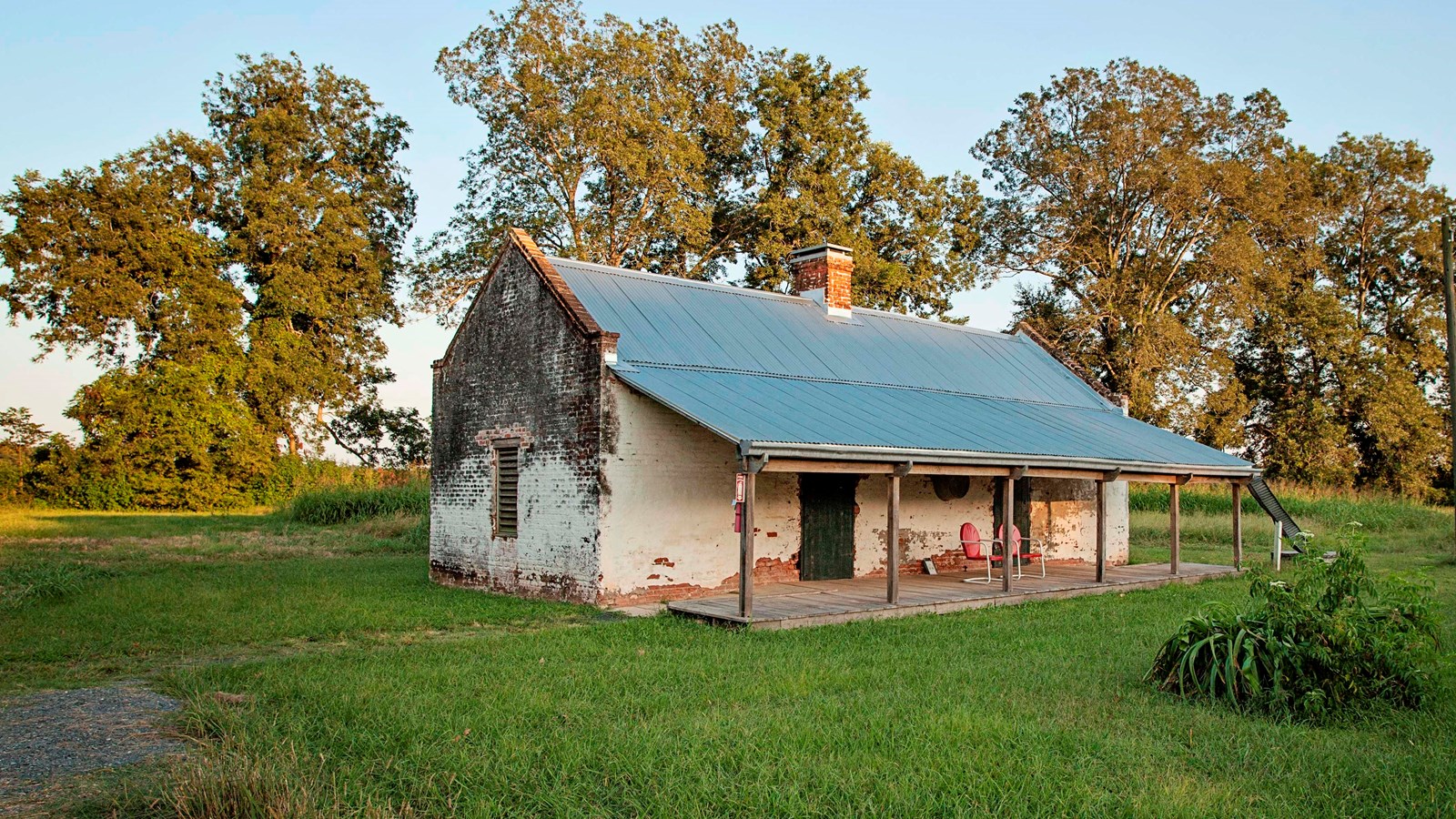Last updated: May 4, 2022
Place
Magnolia Quarters

NPS/Annabel Jones
Quick Facts
Location:
Derry, Louisiana
Amenities
2 listed
Benches/Seating, Historical/Interpretive Information/Exhibits
Seventy cabins once housed the plantation’s 235 enslaved laborers. As many as twenty-four of the Magnolia Plantation Cabins were two-room brick structures with back-to-back fireplaces, accommodating a family or group in each of the two rooms. Converted to single family tenant housing after Emancipation, eight cabins of the Magnolia Plantation Quarters have survived. Many of the families who lived here were formerly enslaved, and their descendants, who continued to toil in the same fields where their ancestors labored.
The terms tenant farmer and sharecropper are sometimes used interchangeably. A tenant farmer lives and farms on land owned by someone else. A sharecropper does not live on the land that is being farmed. To work the land, tenant farmers and sharecroppers gave a portion of the crop to the landowner. These workers shopped for goods at the plantation store on a credit system. When the crop came in, workers settled their debt with the landowner and the store. Whatever was left over was their net profit. If it was a bad growing season, or if boll weevils invaded the crop, workers might be in debt at the end of the year. It was difficult to get ahead under this system, so many workers migrated to large northern cites to find better jobs. Other workers were displaced by the modern tractor. The last family moved out of the Tenant Cabins around 1969.
The terms tenant farmer and sharecropper are sometimes used interchangeably. A tenant farmer lives and farms on land owned by someone else. A sharecropper does not live on the land that is being farmed. To work the land, tenant farmers and sharecroppers gave a portion of the crop to the landowner. These workers shopped for goods at the plantation store on a credit system. When the crop came in, workers settled their debt with the landowner and the store. Whatever was left over was their net profit. If it was a bad growing season, or if boll weevils invaded the crop, workers might be in debt at the end of the year. It was difficult to get ahead under this system, so many workers migrated to large northern cites to find better jobs. Other workers were displaced by the modern tractor. The last family moved out of the Tenant Cabins around 1969.
